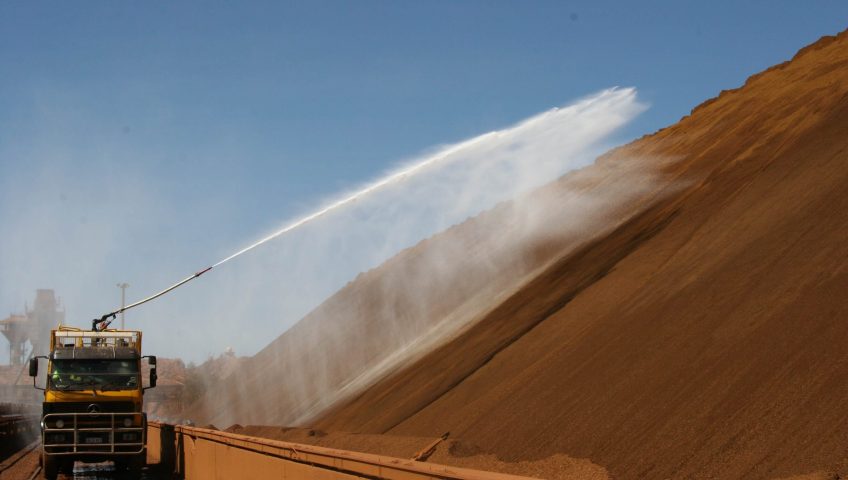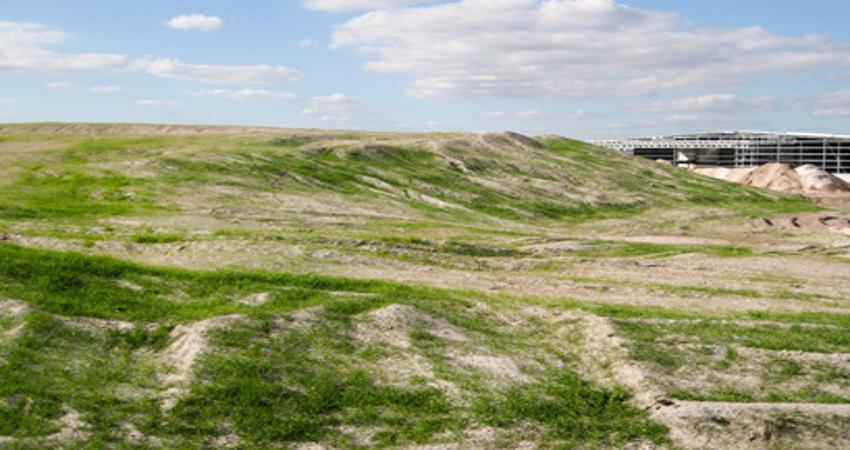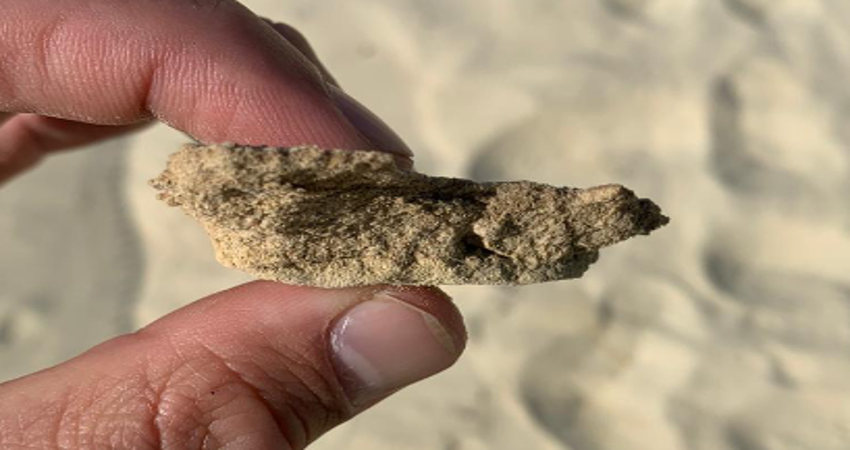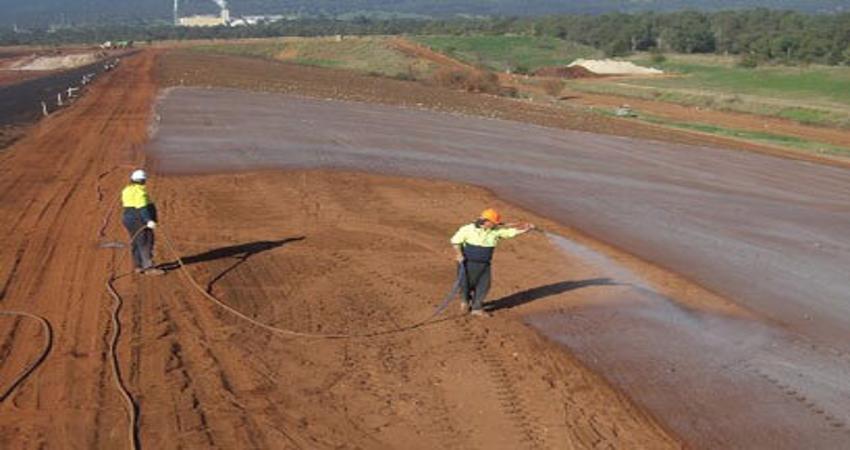Sustainability For The Future: Soil Stabilisation Techniques

Mining and its related heavy industries are undeniable pillars of the Australian economy, however, the impact that they have on the surrounding environment cannot be ignored. This industry is increasingly regulated, and operators are required to adopt the most effective eco-conscious techniques available across all areas of operation to minimise nad manage their environmental impact.
At Rainstorm, our specialty is creating custom-made soil stabilisation techniques that help reduce the long-lasting damage that mining, civil and governmental projects have on the environment. With a range of methods and techniques available throughout Australia, we work alongside your operations to find a solution that will meet your exact needs.
The Rainstorm team is committed to providing clients with knowledge and support relevant to their overall Environmental Impact Reduction Strategy. With a range of methods and techniques available throughout Australia, we work alongside your operations to find solutions that align with your exact needs. From expert dust mitigation and ore treatment to creating specialised compounds to encourage revegetation, Rainstorm has the experience and proven solutions to underpin a green approach to mining and industry.
What is a Soil Stabilisation Technique?
Soil stabilisation techniques refer to a range of processes and methods used to improve the physical properties of soil, making it more stable and suitable for construction, mining and engineering projects.
The primary aim of soil stabilisation is to increase the soil’s strength and durability, reduce its permeability, and enhance its load-bearing capacity. This can be achieved by altering the soil’s chemical, physical, or biological characteristics by adding traditional stabilising agents such as lime, cement, and fly ash, or by using mechanical methods like compaction.
These techniques have been central to the construction of roads, embankments and other infrastructure projects in Australia, especially in areas with poor or challenging natural soil conditions. By stabilising the soil, engineers can prevent erosion, landslides, and excessive settlement, ensuring the longevity and safety of the structures built on them.
Soil stabilisation not only improves the usability of local materials but also contributes to sustainability by reducing the need for importing construction materials and minimising the environmental impact of on-site activities.
Understanding Soil Types and Stabilisation Techniques
The effectiveness of soil stabilisation stands on a thorough understanding of soil properties, as the success of stabilisation methods is directly influenced by the specific characteristics of the soil in question. Different soil types, with their unique properties, pose distinct challenges requiring bespoke stabilisation strategies.
Sandy Soils
Characterised by a granular texture and large particle sizes, sandy soils have excellent drainage but lack cohesion, making them prone to erosion. The key challenge in stabilising sandy soils is enhancing cohesion to improve stability and reduce erosion risks from water and wind.
Techniques include:
- Incorporating binders like cement or lime to boost cohesion.
- Using geosynthetics for added support and stability.
- Applying mechanical compaction to enhance load-bearing capacity.
Clayey Soils
With their fine particles and high plasticity, clayey soils expand when moist and shrink when dry, leading to potential volume changes and structural issues. Stabilisation aims to boost strength and minimise shrink-swell effects with methods like:
- Lime stabilisation to decrease plasticity and increase strength.
- Utilising fly ash to improve physical properties.
- Mechanical compaction to consolidate soil structure, ensuring stability.
Loamy Soils
Loamy soils, a balanced mix of sand, silt, and clay, are well-regarded for their moisture retention and drainage, making them suitable for various applications. While generally stable, some projects may require specific adjustments in strength or permeability with approaches like:
- Making minor adjustments with organic or inorganic binders to modify soil properties as needed.
- Compaction to bolster soil strength and construction suitability.
Peaty Soils
Rich in organic matter, peaty soils are highly compressible and saturated with water, challenging their bearing capacity and increasing settlement risk. Stabilising peaty soils involves strategies to overcome these issues, such as:
- Preloading to compress the soil and remove excess water, reducing compressibility.
- Adding fill materials to either replace or support the peaty layer enhances stability.
- Chemical stabilisation, using lime or cement, to boost load-bearing capacity and establish a firmer foundation.
By carefully analysing the specific properties of the soil, tailored stabilisation techniques can be applied to ensure the structural integrity of projects while also minimising environmental impact.

Understanding The Soil You Work With
Before selecting a stabilisation technique, a thorough test of the soil requiring treatment is necessary. These soil tests will determine what the moisture content, density, plasticity and compaction characteristics are within, which can heavily influence what technique you choose.
With a careful analysis of the soil properties, engineers like our team at Rainstorm can recommend the most effective soil stabilisation technique that will not only ensure the structural integrity of your project but also help to minimise your carbon footprint and environmental impact.
Evolving Soil Stabilisation Techniques
Traditional soil stabilisation methods, such as mechanical compaction and the integration of lime or cement, have been foundational in enhancing soil strength and stability for various construction and infrastructure projects. These methods are valued for their ability to improve soil’s load-bearing capacity and overall durability.
Yet, the environmental implications of these conventional techniques—stemming from the extraction, production, and transportation of materials—cannot be overlooked, given their significant carbon footprint. In response to these environmental concerns, the industry is pivoting towards innovative and sustainable soil stabilisation strategies designed to reduce ecological impact while maintaining, if not improving, soil enhancement outcomes.

Bind X
As a more modern form of soil stabilisation, Bind X is a bio-geochemical process that introduces calcium carbonate precipitation into the surrounding soil. When it is applied to the soil’s surface by a water cart, it creates a solid, cement-like surface, locking down the treated area to protect it from wind erosion and water run-off.
Commonly used along LV and primary haul roads, Bind X can help improve soil conditions and your mine site’s carbon footprint and overall environmental performance.
GluOn™
GluOn™, a multifunctional water-bound polymer emulsion, is effectively used both as a surface veneer and for soil stabilisation. When mixed with water, this polymer forms a mesh that adheres to soil and ore dust particles, creating a stable and flexible bonding chain that secures the soil in place. The application of GluOn™ results in a compacted surface layer with a low permeability outer layer, effectively preventing water erosion and minimizing airborne dust.
For projects of any size, Rainstorm is equipped to provide you with tailored solutions. We offer batch sizes customised to meet the specific requirements of your project, along with dye-marking options, batching guides, and comprehensive site procedures. Our experienced team is also available for on-site applications, ensuring that every aspect of your project is handled with expertise and confidence.
Balancing Industrial Growth with Environmental Responsibility
As Australia’s heavy industrial sectors strive to reconcile their expanding operational demands with a commitment to environmental stewardship, the importance of soil stabilisation techniques has never been more pronounced. These methods are crucial not only for improving soil properties to meet the stringent needs of industrial and construction activities but also for doing so in a way that genuinely lessens environmental impact.
Repurposing Industrial By-Products for Soil Enhancement
The use of industrial by-products in soil stabilisation addresses the dual challenges of land reclamation and environmental conservation. Repurposing materials like fly ash and silica fume as soil stabilisers not only bolsters the mechanical properties of the soil but also contributes to reducing the environmental footprint of large-scale industrial operations. Once considered waste, these by-products can be invaluable for stabilising soil in high-traffic areas, including mining haul roads and foundations for civil infrastructure.
Bio-Enzymes and Organic Stabilisers
The adoption of bio-enzymes and organic stabilisers, like Flexterra, presents a greener approach to soil improvement in both mining and civil projects. These natural agents facilitate soil particle reorganisation, enhancing soil compaction, strength, and water resistance with minimal environmental disturbance. Particularly for efforts to rehabilitate and revegetate depleted mining sites, as well as for projects in ecologically sensitive zones, bio-enzymes exemplify a commitment to sustainability and ecological restoration.
Customising Sustainable Techniques for Specific Needs
Successfully implementing these sustainable practices demands a deep understanding of the varied challenges and requirements across the mining, civil, and heavy industrial landscapes. Customising soil stabilisation methods to match the unique conditions of each project ensures that operational efficiency and environmental conservation goals are both achieved.
Partnering with a company like Rainstorm means collaborating to develop a soil stabilisation solution precisely tailored to the specific needs of your project, facilitating seamless integration with existing operations.
The Crucial Role of Government Regulations in Soil Stabilisation
In Australia, adherence to regulatory frameworks is essential in guiding the selection and implementation of appropriate soil stabilisation techniques. These regulations are designed to ensure environmental sustainability and safety across projects. Achieving compliance involves a comprehensive understanding of both local and federal standards, conducting detailed environmental impact assessments, and employing methods that are officially sanctioned.
With an extensive background spanning over three decades in addressing the regulatory requirements of the governmental, civil, and mining sectors, Rainstorm possesses in-depth expertise in meeting the environmental sustainability obligations of heavy industries.

Explore Sustainable Soil Stabilisation Techniques with Rainstorm
At Rainstorm, our Contractor Services offer a broad spectrum of soil stabilisation techniques that can be tailored to your specific project needs.
Whether it’s soil stabilisation, revegetation or environmental rehabilitation, with over 30 years of field experience, we’ll work with you to create a solution that not only meets governmental regulations with ease but also lowers your carbon footprint.
Get in touch with our team of technicians and schedule a site consultation with Rainstorm today.










